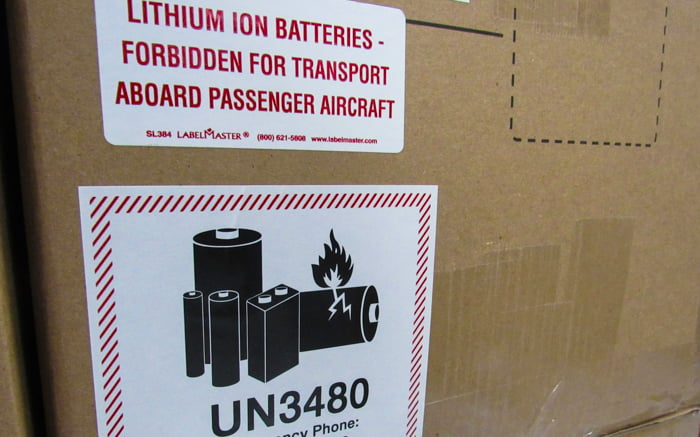This topic is mainly focused on properly shipping lithium ion batteries due to shipping regulations, but could also apply to Ni-MH where appropriate.
Let’s start by identifying the different classification of the batteries as they are managed. There is the stand alone battery (not contained in a device), which may be a single to multiple cell pack. There is the actual battery cell itself that is typically shipped from the battery manufacturer to the distributor or assembler, and then there is the completed battery pack that is assembled in the finished product, packaged, and sent to the distributor or end customer. These are identified as “packed with” or “contained in equipment”.

How to Safely Pack And Ship Batteries
When shipping lithium batteries, is it OK to ship a fully charged battery? The answer is no, and there are in fact very specific guidelines on safely charging batteries for shipping. The recent regulatory directive on lithium based chemistry identifies that the cells, or the battery packs themselves, need to be at a 30% state of charge (SOC) when being shipped. This is being tightly controlled now by manufacturers at the cell levels and assemblers are following the practice at the pack level. This does not apply to the battery packs with or contained within equipment.
Where the confusion may lie is when the completed battery is installed in the equipment or final device and shipped to the end user and/or warehouse for stocking. At this point the state of charge is no longer a critical factor, as once the battery is installed, the device has the battery electrically disconnected. The battery is also protected at multiple levels of packaging so there is no risk in contacting another battery during transit.
Knowing the 30% state of charge doesn’t apply to the battery in the end product, it is more of a specific product and logistics choice to determine what state of charge to manage the battery. Factors that should be considered include:
- Specific battery chemistry
- Anticipated self-discharge rate
- Device application itself and
- How long is the end product going to be warehoused before use
If a battery is going to sit idle for extended periods of time, it is preferable to keep the state of charge at a lower point such as between 30-50%. A lower state of charge will help reduce the self-discharging rate as well as lowering the non-recoverable capacity loss that occurs with fully charged batteries which sit for extended periods of time to self-discharge.
Summary
Most products that use re-chargeable batteries will contain an “Instructions For Use” with the device that will state the battery needs to be fully charged prior to first use. The answer for charging of lithium ion batteries is not a generic one and involves the understanding of the battery chemistry you choose for your application with the logistics of your product to the consumer. It is important, however, to be aware of and observe all specified regulations and regulation changes when shipping lithium ion batteries.
















